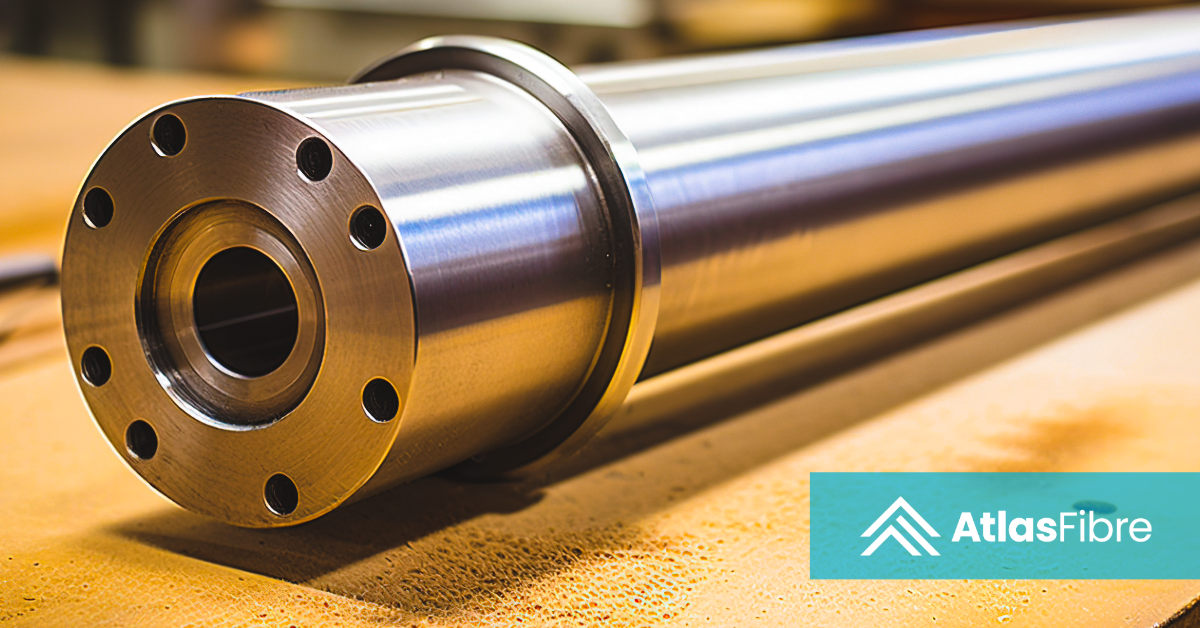
Picture this: a six-inch diameter tube that’s strong enough to withstand 3,000 psi of pressure… yet weighs half as much as aluminum. Welcome to the world of filament winding — a little-known composite tube manufacturing technique that’s quietly revolutionizing everything from aerospace to deep-sea exploration.
What Exactly Is Filament Winding?
At its core, filament winding is a high-tech version of wrapping thread around a spool—only in this case, that “thread” might be glass epoxies like G-10 or FR-4, Kevlar, or carbon fiber, and the “spool” is a mandrel that shapes the final tube or pressure vessel.
The result? Custom-engineered cylinders with tailor-made strength, stiffness, and resistance properties.
Why Glass is King (But Not the Only Option)
The MVP of reinforcements in filament winding is glass filament, thanks to its exceptional strength and elastic behavior. Unlike metals that stretch and deform (aka “yield”) under pressure, glass holds firm until the moment it snaps – making it extremely predictable and durable under stress.
For specialized jobs, manufacturers may reach for aramid fibers (like Kevlar), carbon/graphite, or even boron. These exotic materials trade off cost for performance in extreme conditions – think ballistic armor or hypersonic aircraft.
Resin: The Unsung Hero
Reinforcements give strength – but resins are the glue (literally and metaphorically) holding everything together.
Most filament-wound products use epoxy resin, though polyester comes into play when chemical resistance matters more. The resin’s job is fivefold:
- Position the filaments where they’re needed
- Evenly distribute load across the structure
- Protect fibers from wear and tear
- Control electrical and chemical behaviors
- Add toughness between layers
It’s a symphony of chemistry and physics working together – like carbon fiber’s cooler, quieter cousin.
Strength by Design
One of filament winding’s greatest strengths – pun intended – is its ability to tailor mechanical properties through winding angles.
- Wrap the fibers parallel to the tube (close to 0°), and you get maximum longitudinal strength.
- Wrap them around the tube (close to 90°), and you boost circumferential strength—perfect for pressure vessels.
Engineers can fine-tune these angles to get just the right blend of stiffness and flexibility. Want your part to flex? Use a shallow angle. Need it rock-solid? Crank it up to 90°.
Numbers Don’t Lie
Let’s compare a glass-reinforced tube with a 7075 T6 aluminum one:
- 50% less weight
- 38% thinner wall
- Over 2x structural efficiency in pressure-per-pound terms
And those stats don’t even factor in the benefits at extreme temperatures. Filament-wound glass composites have:
- 150% more strength at -424°F (think cryogenics)
- Glass stability up to 1000°F (resin limits this, but special versions go to 500°F+)
Built to Be Machined
Despite their high-tech origins, filament-wound parts are highly machinable. That means they can be drilled, shaped, or threaded with common tools (plus coolant and ventilation to keep dust down).
Surface finishes vary depending on the tooling, but can range from rough and ready to mirror-smooth.
Tough on Weather, Gentle on Signals
Thanks to high-performance resins, filament-wound tubes can shrug off:
- UV radiation
- Temperature swings
- Moisture exposure
And here’s the kicker—they’re nonmagnetic and transparent to radio signals. That makes them ideal for things like antenna housings, radomes, and stealthy military gear.
Chemical Ninja Skills
You know what doesn’t love acids and corrosive chemicals? Metal. You know what does? Filament-wound composites.
These materials outperform stainless steel, Monel, and even titanium in many chemical environments—assuming the right resin-reinforcement combo is chosen. Always test, but expect good results.
Lightweight Heavyweight
Let’s wrap with some raw numbers for glass-reinforced filament-wound tubes:
- Tensile Strength: Up to 150,000 psi (depending on wind angle)
- Compressive Strength: Up to 80,000 psi
- Modulus of Elasticity: Up to 6,000,000 psi
- Density: ~0.072 lb/in³ (lighter than water!)
That’s lighter than aluminum with strength that can rival steel – engineered specifically for your application.
The Bottom Line
Filament winding might not be a household term, but behind the scenes, it’s powering the future – one perfectly wrapped, high-performance tube at a time.
Whether you’re launching rockets, building submarines, or just designing a better bicycle frame, this technology quietly delivers strength without weight, resilience without compromise, and design freedom that traditional metals just can’t match.
